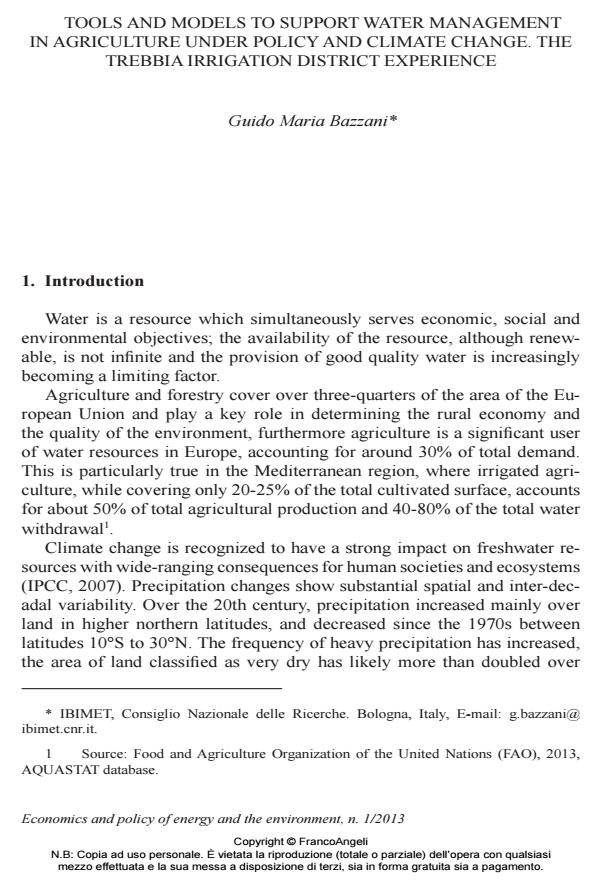Tools and models to support wa ter management in agriculture under policy and climate change. The Trebbia irrigation district experience
Titolo Rivista ECONOMICS AND POLICY OF ENERGY AND THE ENVIRONMENT
Autori/Curatori Guido Maria Bazzani
Anno di pubblicazione 2013 Fascicolo 2013/1
Lingua Inglese Numero pagine 22 P. 125-146 Dimensione file 1268 KB
DOI 10.3280/EFE2013-001007
Il DOI è il codice a barre della proprietà intellettuale: per saperne di più
clicca qui
Qui sotto puoi vedere in anteprima la prima pagina di questo articolo.
Se questo articolo ti interessa, lo puoi acquistare (e scaricare in formato pdf) seguendo le facili indicazioni per acquistare il download credit. Acquista Download Credits per scaricare questo Articolo in formato PDF

FrancoAngeli è membro della Publishers International Linking Association, Inc (PILA)associazione indipendente e non profit per facilitare (attraverso i servizi tecnologici implementati da CrossRef.org) l’accesso degli studiosi ai contenuti digitali nelle pubblicazioni professionali e scientifiche
The Water Framework Directive (WFD) should guarantee the "good status" of nearly all European waters by the year 2015, the achievement of this ambitious goal is made more difficult by climate change which is recognized to have a strong impact on freshwater resources. Agriculture has been identified as a strategic sector and environmental objectives are progressively integrated into the reformed agricultural policy. The use of models and tools is recommended in the WFD to support the implementation process of the Directive. This paper first briefly clarifies the policy context, then considers tools and models applied in Italy to water management and agriculture. Recommendations are then presented on how tools should be used, taking the Trebbia irrigation district experience in the Po valley as an example, where a participatory process supports the Irrigation Board in preparing the water conservation plan.
Parole chiave:Decision Support, Model, Water, Agriculture, Policy, Climate change
Jel codes:Q15, Q16, Q25
Guido Maria Bazzani, Tools and models to support wa ter management in agriculture under policy and climate change. The Trebbia irrigation district experience in "ECONOMICS AND POLICY OF ENERGY AND THE ENVIRONMENT" 1/2013, pp 125-146, DOI: 10.3280/EFE2013-001007